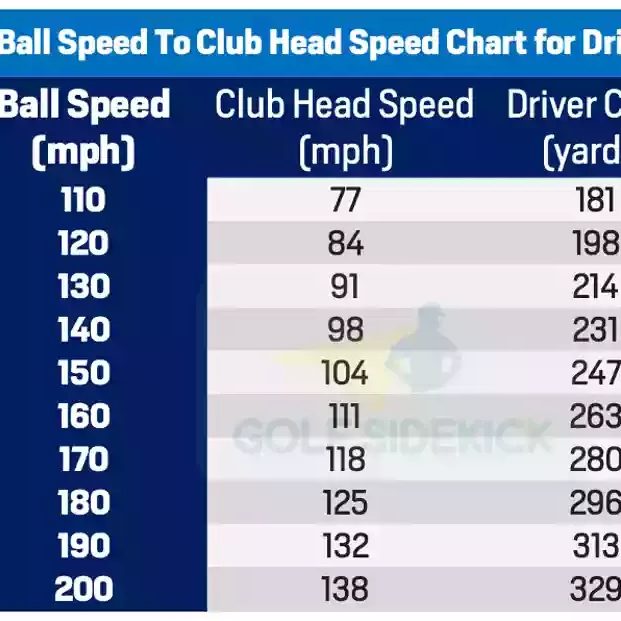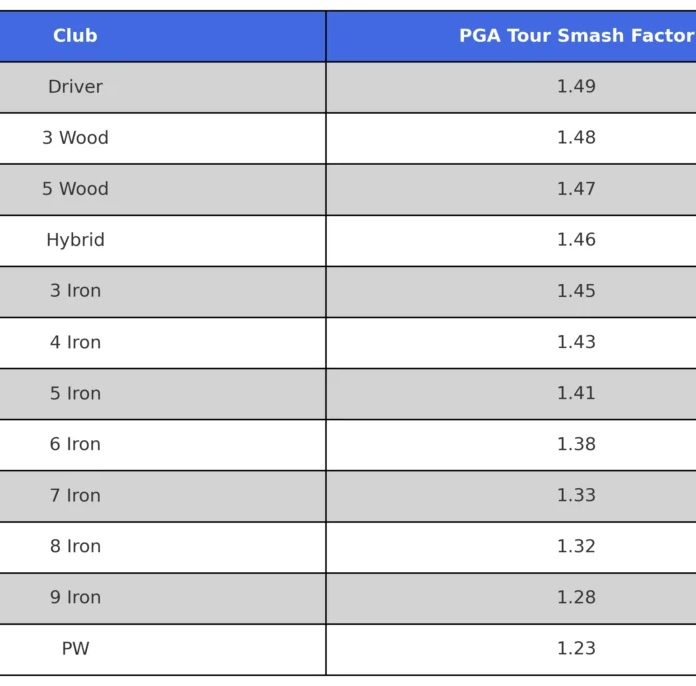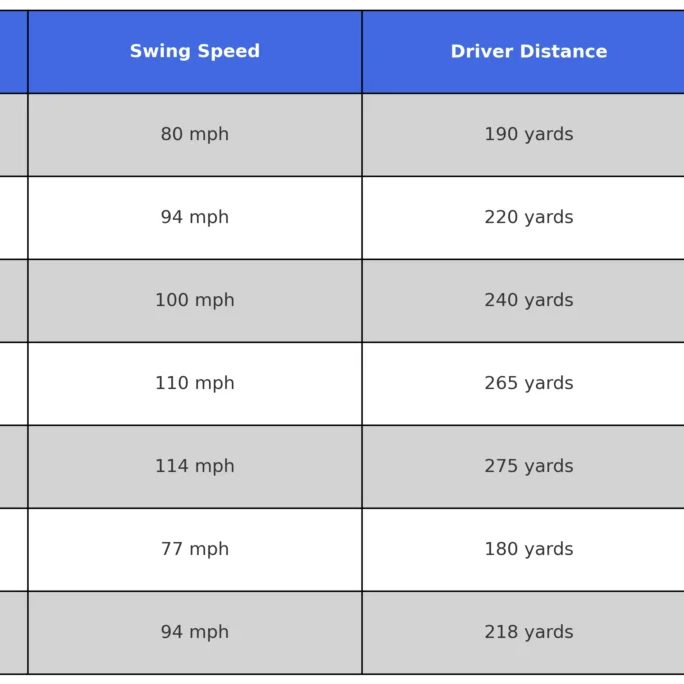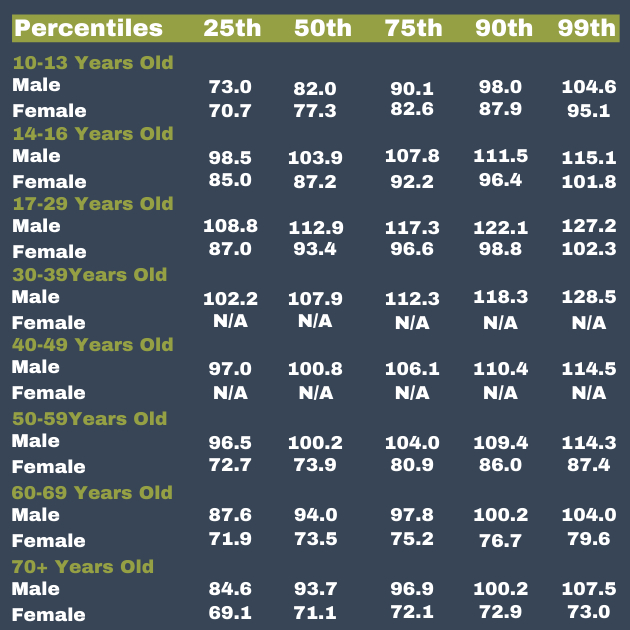Introduction to Golf Swing Speeds
If you’re aiming to level up your golf game, knowing your swing speed is crucial. It tells you how fast the club head strikes the ball. A higher speed often leads to a farther shot. Many factors affect your swing speed, like fitness, skill, and the driver you use. It’s measured in miles per hour (mph).
As we age, our swing speed can change. For younger golfers, it’s about building power and technique. Older players may see a drop in speed. But, all age groups can work on their game. Good news: understanding your swing speed can help set realistic goals. It’s about playing smarter, not just harder, to enjoy the game at any age.
Key Factors Influencing Swing Speed
Understanding the various factors that can impact your golf swing speed is vital. These factors range from your physical condition to the gear you use. Let’s break down these key ingredients.

Physical Fitness and Conditioning
Physical fitness plays a huge part in your swing speed. Good fitness levels mean more strength and flexibility, which translate to faster swings. Here’s what counts:
- Regular workouts to build muscle and stamina.
- Flexibility exercises like yoga can help your swing.
- Endurance training, so you can maintain speed throughout the game.
- Tailored golf-specific exercises can hone muscles used in your swing.
Golf Swing Mechanics and Technique
Your swing technique is just as critical as your fitness. Proper mechanics can add yards to your drive. Consider these tips:
- A solid stance allows a full, powerful swing.
- Correct grip and posture are essential.
- Smooth, timed swings trump erratic, quick ones.
- Regular practice hones muscle memory, for consistent swings.
Golf Equipment and Technology
The right gear can also boost your swing speed. Advances in technology offer a significant edge. Keep in mind:
- The right driver for your style makes a difference.
- Lightweight clubs can increase speed and control.
- Technology like adjustable club weights and flex options can fit your unique swing.
- Up-to-date gear, suited to your physical capabilities, optimizes performance.
Understanding these factors can give you a clearer picture of what affects your golf swing speed. Integrate them into your training to see the best results.

Swing Speed Trends Across Age Groups
Understanding how swing speeds differ with age can help golfers of all levels. Here’s what to expect as you navigate through different age milestones.
Peak Performance: Teens and Twenties
- Most golfers reach their fastest swing speeds during these years.
- Young players often swing between 105 to 110 mph.
- Focused training and strength-building can push these speeds higher.
- It’s a time for rapid improvements in distance and power.
Stabilization Period: Thirties and Forties
- Swing speeds often level out for golfers in these decades.
- Males maintain an average near 100 to 105 mph and females around 90 to 95 mph.
- It’s crucial to maintain a regular training routine to sustain swing speeds.
- Slight decreases in speed are common, but not significant if you stay active.
Declining Speeds: Fifties and Sixties
- Swing speed usually begins to slow down due to decreasing strength and flexibility.
- Men tend to average mid 90s and women around 85 mph in their fifties.
- Staying fit and making swing adjustments are essential to maintaining speed.
- In the sixties, speeds can drop further, making it important to adjust strategies.
Senior Swing Considerations: Seventies and Beyond
- Golfers in their seventies may see average speeds in the low 80s mph.
- Women usually exhibit speeds around the mid 70s mph.
- Seniors can still maintain adequate speeds with proper fitness and technique.
- Adjustments in gear and mechanics may be necessary to optimize performance.
By knowing the average golf ball speed by age, golfers can set achievable goals. This knowledge can help you tailor your training to maintain or improve your swing speed.

Strategies for Maintaining and Improving Swing Speed
To keep or boost your golf swing speed, you need the right strategies. Let’s explore some effective ways.
Exercise Regimens for Golfers
Building swing speed starts with solid exercise plans. Here are some exercises that can help:
- Workouts that focus on core, legs, and upper body boost power.
- Flexibility routines increase your range of motion.
- Cardio exercises improve stamina for those long games.
- Balance and stability workouts help you control your swing better.
Importance of Proper Warm-Up Routines
Warming up is key before hitting the links. Here’s how:
- Start with stretching to loosen up those muscles.
- Simple swings get your body used to the motions.
- Gradually increase your swing speed as you warm up.
- Incorporate dynamic stretches for overall readiness.
Benefits of Professional Golf Coaching
Coaching can make a big difference. Here’s why:
- Pros can spot and fix issues in your technique.
- You get drills targeted at your specific needs.
- Coaches give feedback for immediate improvements.
- They plan long-term strategies for consistent progress.
Choosing the Right Golf Equipment
The gear you use affects your swing speed. Keep these in mind:
- Pick clubs that match your swing style and body type.
- Consider lighter materials for faster swings.
- Get fitted by a pro to find the best clubs for you.
- Remember that new tech can give you an edge.
By following these methods, you can work on your swing speed at any age. Stick to a good routine, warm up well, get coaching, and use the best equipment for your game.
Understanding and Setting Realistic Expectations
Setting realistic goals in golf is key to enjoying the game. As we age, swings change.
Accepting Natural Changes in Swing Speed
Everyone’s swing slows down over time. It’s part of aging. Knowing this can help you adjust. A slower speed doesn’t mean you can’t enjoy golf. Use it to set new, reachable goals. Work within your limits to keep the game fun.
Focusing on Accuracy and Short Game
With less swing speed, focus on other areas. Accuracy and short game are vital. They can lower your scores just as well. Work on putting, chipping, and course strategy. Making smart plays can make up for slower swings. Plus, they add a new layer of challenge to the game.
Conclusion: Embracing Change and Continual Improvement
As golfers, achieving our best game involves accepting and embracing change. We’ve discussed how swing speed can vary with age. This is a natural process and understanding it allows us to adapt accordingly. Rather than resisting the inevitable slowing of our swing speed, we can shift focus. Concentrating on precision, strategy, and other skills can enrich our golf experience.
By setting realistic expectations, we tailor our practice and mindset. This aids in preserving the joy of golf at every stage of life. It’s important to remember that golf is not just about power. Skills like course management and a sharp short game often prove just as crucial. The goal is to find a balance between playing to our current strengths and seeking steady improvement.
Progress comes in many forms, and not just in added yards off the tee. It can reflect in lower scores, a polished technique, or a strategy that outsmarts the course. Age may impact our physical abilities, but it enhances our wisdom and experience on the green.
In practicing, adjusting, and fine-tuning, golfers of all ages can enjoy their growth in the sport. Whether you’re competing or playing for leisure, golf remains a game where continual improvement is always possible. Embrace the changes, and let them guide you to be a better, more strategic golfer.
